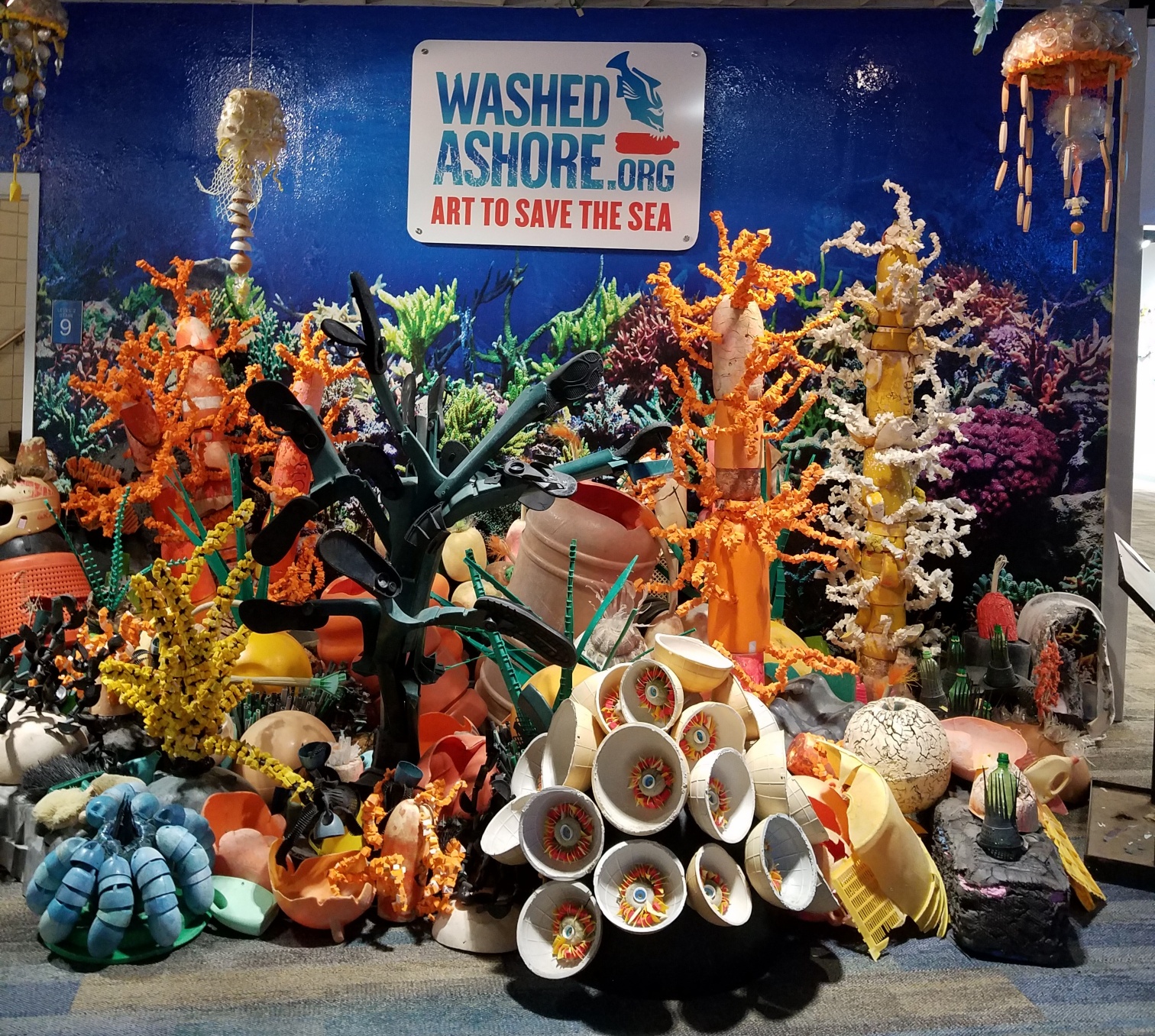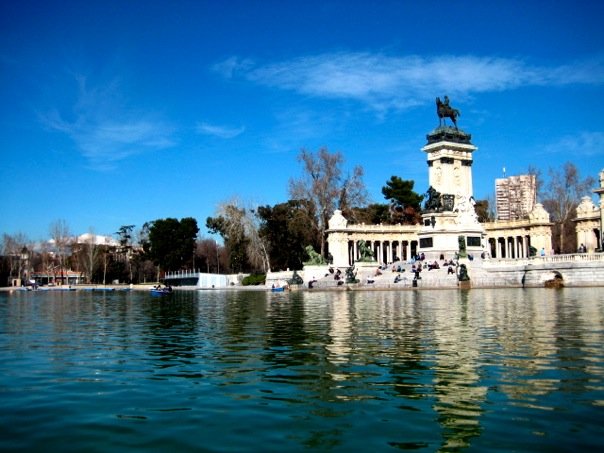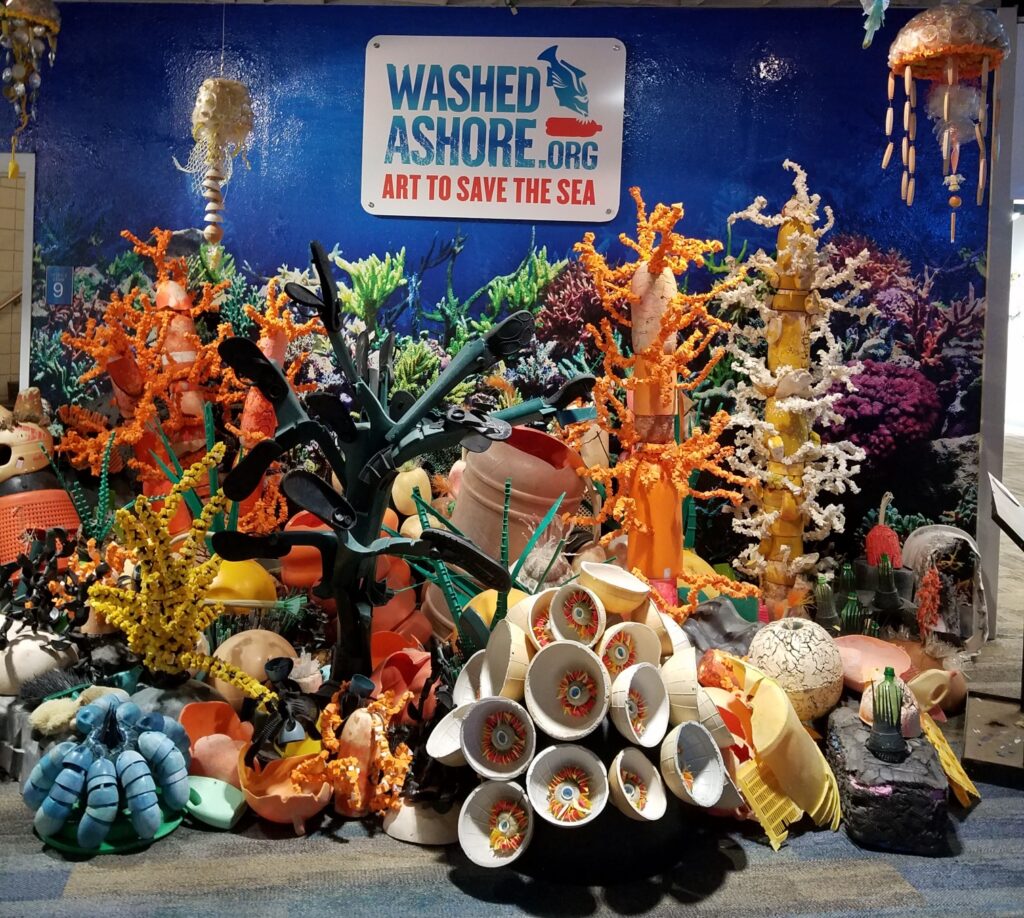
My first exposure to environmental activism art was in 2018, during a visit to Bruges, an enchanting European canal city. It is hard to forget a 5-ton towering whale made from plastic waste. Be assured, the emotional connection from such a grand visual statement can and will result in inspiring immediate change. The near 40-foot-high skyscraper was created by StudioKCA New York from plastic collected from the Pacific Ocean by thousands of volunteers from the Hawaii Wildlife Fund and the Surfrider Foundation.
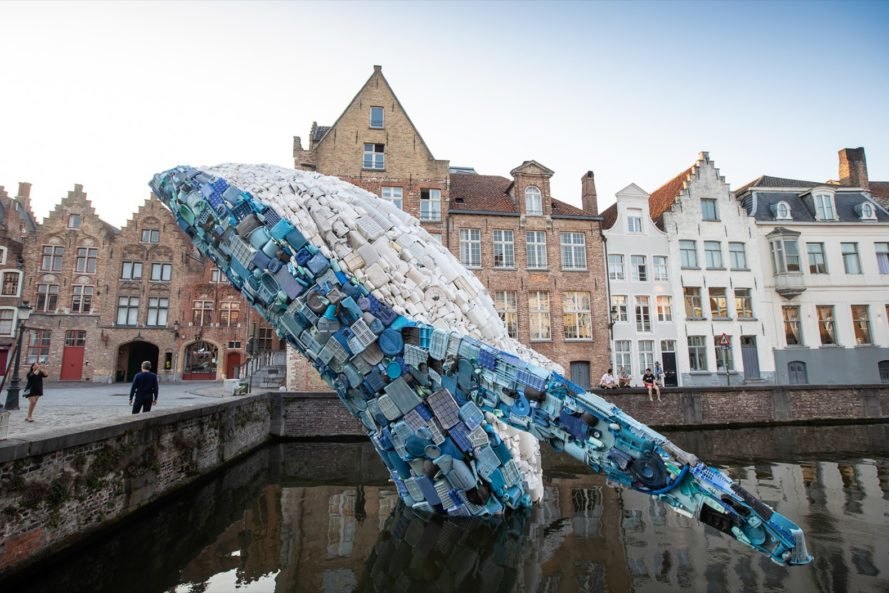
The art’s true wow factor is a revelation and a wake-up call to the damage being done daily. The deadliest predator in our oceans is the not the shark, but trash.
Consumers, often unknowingly, are killing our planet with plastic pollution.
A heart-wrenching visual that can’t be ignored; imagine one of the plastic 6-pack rings of your favorite beverage around a sea turtle’s neck.
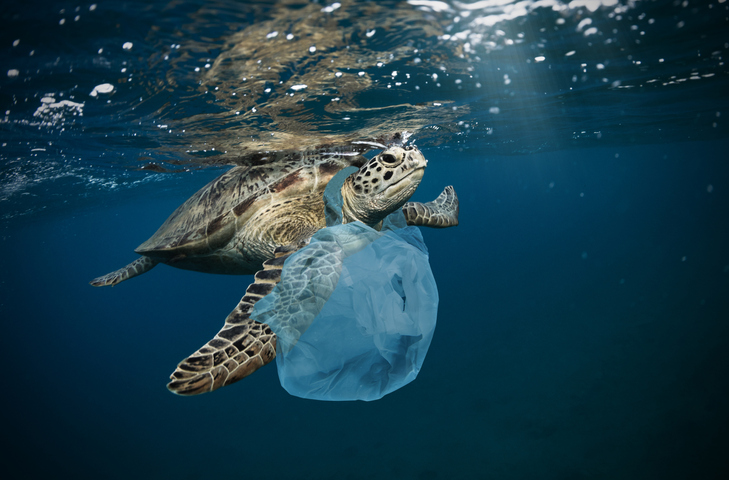
The campaign to educate and spark change remains strong through the determination of many creative non-profit organizations around the world. Washed Ashore is one such group, based in Oregon, that is taking the mission to a public stage with a traveling sea-saving art exhibit. Washed Ashore has graced the Smithsonian and other high profile venues. The art speaks louder than any words in a spirited and powerful voice awakening consumers to the global crisis.
I traveled to the Florida Aquarium in Tampa where Washed Ashore is in residence, for a closer look. The Florida Aquarium, now open under limited capacity restrictions, features 18 larger life sculptures. Pricilla the Parrot Fish welcomes visitors daily.
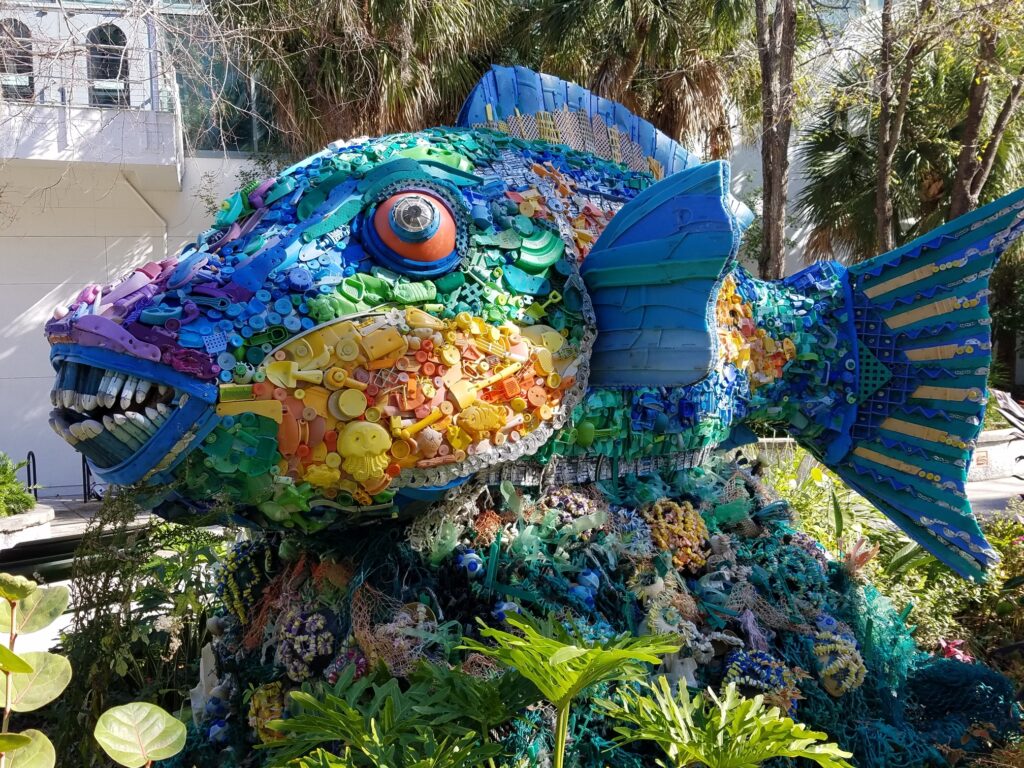
More unique pieces are scattered throughout alongside living sea creatures, reminding us of the beauty and fragility of our natural resources. Artist and Educator, Angela Haseltine Pozzi and volunteers created each piece from plastic debris washed ashore on Pacific Coast beaches. These breathtaking masterpieces are made from frisbees, flip-flops, bottle caps, brushes and everyday plastic household items.
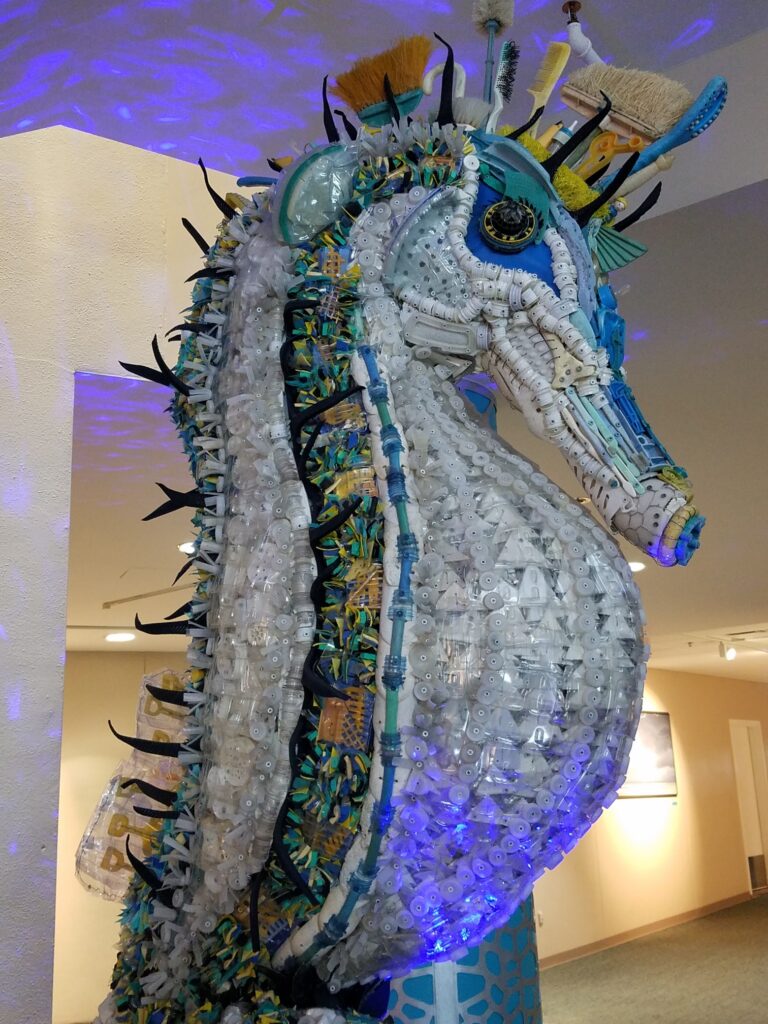
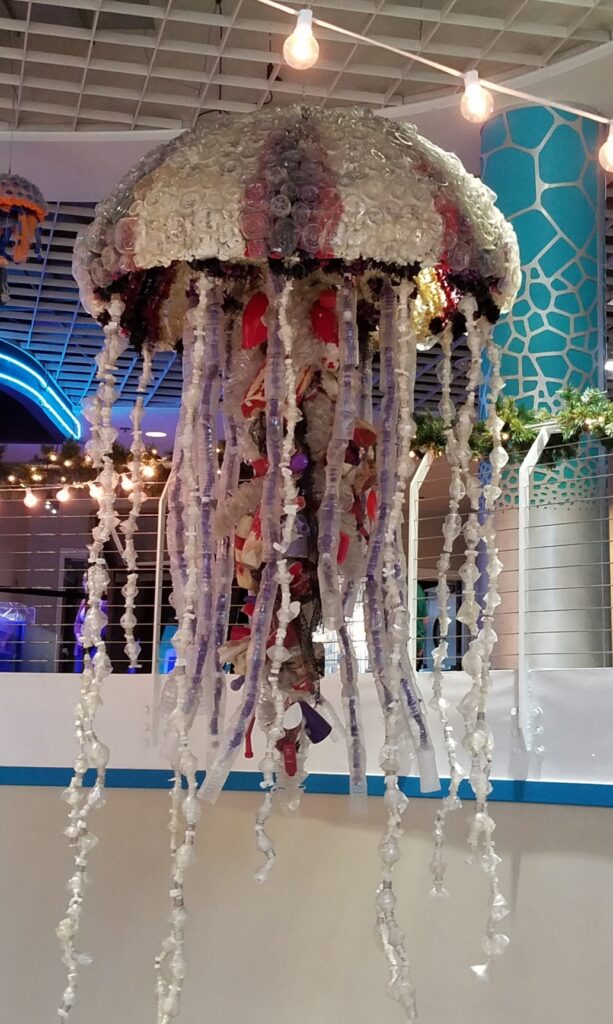
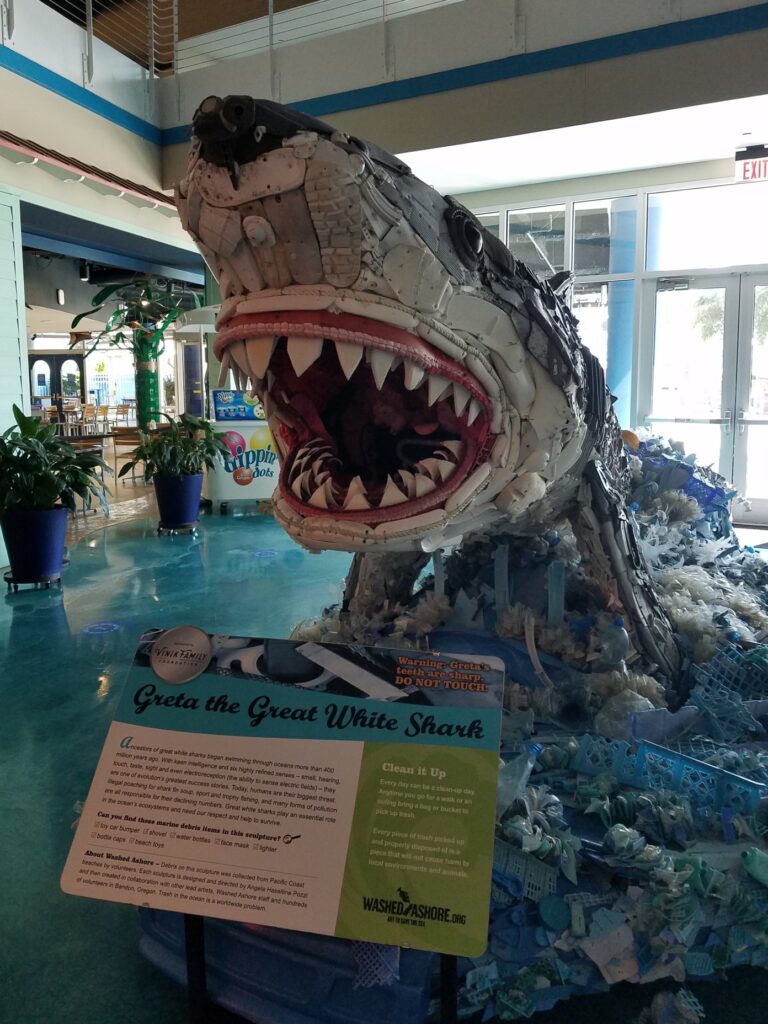
Washed Ashore’s “Earth Day” video offers a glimpse into the Washed Ashore creative process.
California is one state with a conscience that is taking action. Oakland Zoo and partner, Recology, working alongside global NGOs attempted to put a statewide measure in place to fund environmental restoration for areas impacted by pollution and increase domestic recycling. Sadly, the California Plastic Pollution Reduction Act of 2020 failed to pass by four votes. The measure included the reduction of plastic packaging entering California and required single-use plastic packaging to be recyclable or compostable by 2030.
Single-Use Plastic Facts: (c/o Oakland Zoo website)
- More than 70 million tons of single-use plastics are produced every year
- Only 9% of what is put in a recycling bin, actually ends up being recycled. The rest ends up in landfills, the ocean, or simply dumped – and will take about 1,000 years to decompose
- With 8 million tons of plastic finding its way into our oceans annually, there will be more plastic than fish in the sea by 2050
- 100,000 marine mammals die each year from consuming or becoming ensnared in plastic
- Animals on land are being equally affected by plastic. Littered plastic bags, fishing wire and bottles commonly trap and entangle wildlife – 1 million sea birds are killed each year from plastic pollution.
For more information on Washed Ashore and upcoming exhibit schedule, visit the official Washed Ashore website.
The Washed Ashore- Art to Save the Sea is on display at the Florida Aquarium now until February 2021. A general admission ticket allows access to collection.
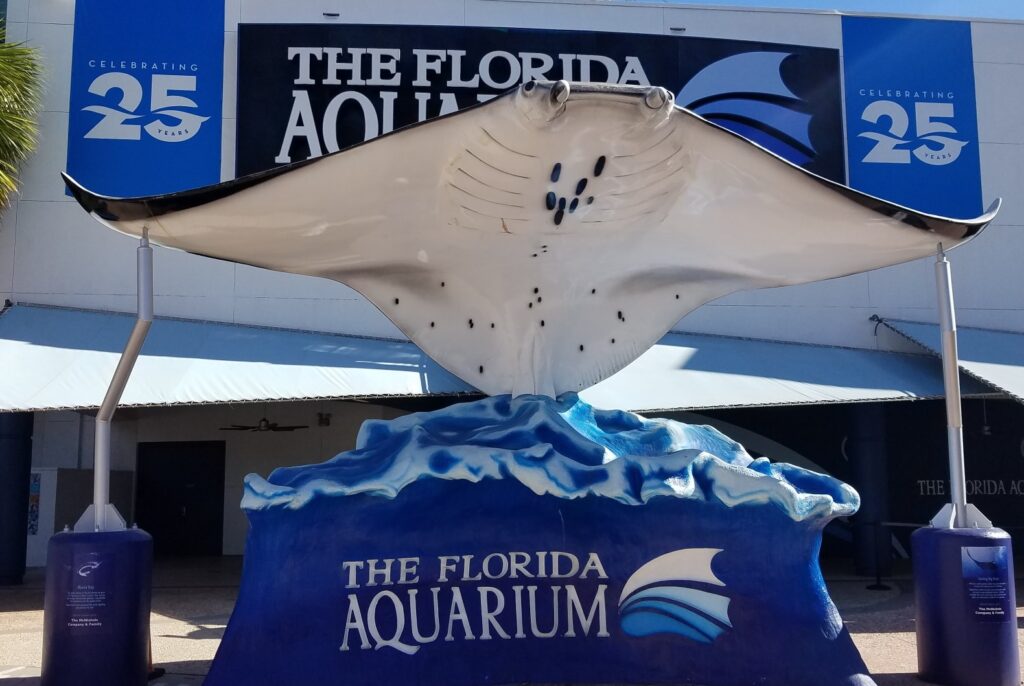
The Florida Aquarium in Tampa is open every day except Thanksgiving and Christmas. Learn more at https://www.flaquarium.org/planyourvisit.
The Seahorse and Stingray exhibits were my top picks – amazing and should not be missed!
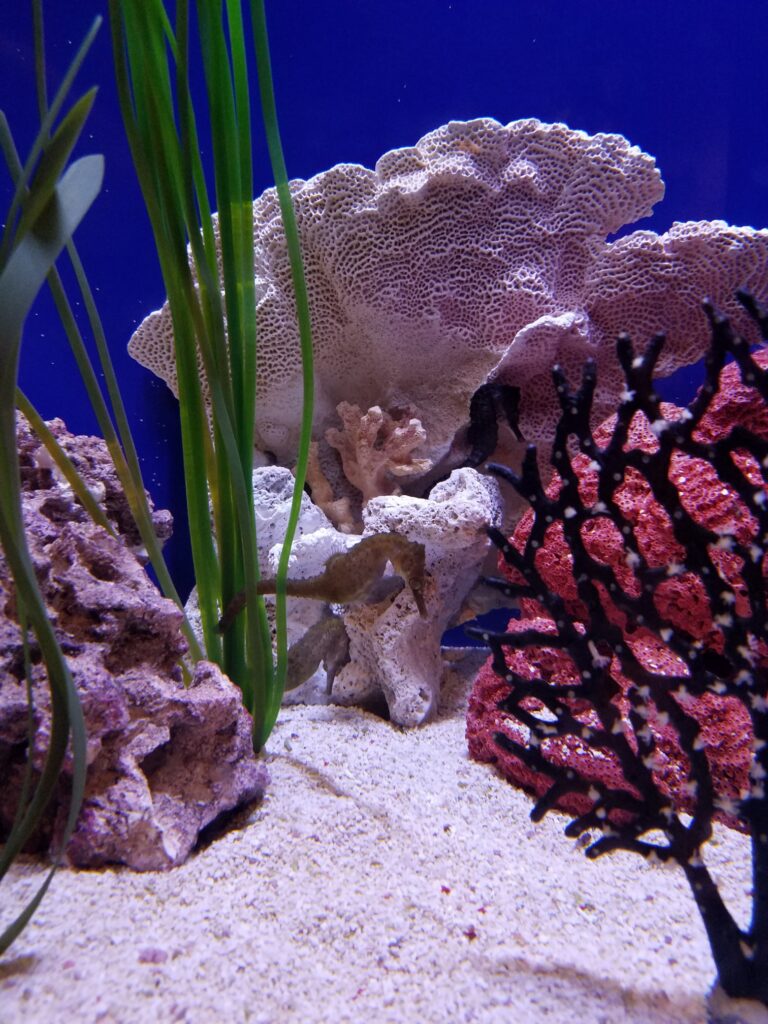
Special Note: Breaching Whale Art Photo courtesy of StudioKCA
